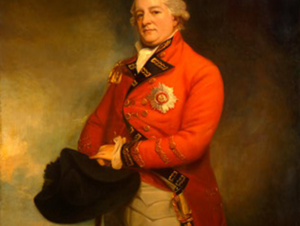Raising of The 74th

1787
Sir Archibald Campbell of Inverneill raised the 74th Highlanders in 1787 as one of the regiments raised to counter a threat in India – it was a Campbell regiment raised in Argyll with its headquarters in Glasgow. The Regiment soon left Scotland for India and, along with The 71st Highlanders, fought with distinction in the Second Mysore campaign, in particular at the capture of Bangalore (1791) and the siege, assault and capture of Seringapatam (1791-2). The 74th were present, under Sir Arthur Wellesley, later the Duke of Wellington, throughout the Mahratta War, taking part in the battles of Ahmednaggar (1803), Assaye (1803) and others. The 74th returned home in 1805, having been awarded the Assaye Colour, the insignia of the elephant on the Regimental Colour and having been described by Wellesley as “My fighting Regiment” – it was afterwards known as “The Assaye Regiment” for its epic stand at the battle. The 74th arrived in the Peninsula in January 1810 and during the next four years added eleven battle honours to their Colours, a record matched by no other Regiment. The 74th served all other the world, including: Canada; West & East Indies; South Africa; Gibraltar; Hong Kong and Singapore. They returned to Scotland in 1880 and after amalgamation with The 71st Highlanders (1881) to become The Highland Light Infantry.
Britain’s troubles at the end of the 18th century spread to India and the need for new regiments became pressing. In 1787, The 74th (Highland) Regiment of Foot was raised in Argyll and opened its headquarters in Glasgow. It was a Campbell regiment, eleven of the original officers being of that name, including its Colonel, Major General Sir Archibald Campbell of Inverneill.
Sir Archibald Campbell was commissioned into The Royal Engineers and served in the Seven Years War, Siege of Quebec, raids on France and West Indies. He was made Chief Engineer of the British East India Company, making his fortune, standing for Parliament and later sailing for America in command of The 71st Regiment of Foot, Fraser’s Highlanders into the eye of the American Revolutionary War. He was captured, but later won the battles of Savannah and Augusta, later becoming the Governor of Jamaica and Madras.
The new Regiment had an establishment of over 900 men including 20 drummers, 2 fifers and 710 private soldiers. The uniform was the full Highland garb of kilt and feathered bonnet, the tartan being similar to that of The 42nd Regiment , and the facings white; the use of the kilt was, however, discontinued in the East Indies, as being unsuited to the climate.
The 74th Highlanders almost immediately left for India, where they fought in the Third Mysore War (1789-92), participating in the capture of Bangalore (1791) and the siege, assault and capture of Seringapatam (1791-2). This was closely followed by the Second Polygar War (1800-05) and the Second Maratha War (1803-6) – the latter under Sir Arthur Wellesley, later the Duke of Wellington, fighting in the battles of Ahmednaggar (1803), Assaye (1803) and others. During the battle of Assaye, every officer in the Regiment was killed and the remaining members of The 74th were led into battle by the Regimental Sergeant-Major. For this action and their exemplary service of 18 years in India, the East India Company award the Regiment the third or Assaye Colour – The Royal Highland Fusiliers, and now their successor battalion, The Royal Highland Fusiliers, 2nd Battalion The Royal Regiment of Scotland were the only British infantry regiment to carry a third Colour.
Sir Arthur Wellesley also gave The 74th the distinction of dubbing them “My Fighting Regiment!
The 74th spent four years (1810-14) in the Peninsula fighting Napoleon’s armies and added eleven battle honours to the Regimental Colour, more than any other Regiment: Busaco (1810); Fuentes de Onoro (1811); Ciudad Rodrigo (1812); Badajoz (1812); San Christobal (1812); Salamanca (1812); Vittoria (1813);Pyranees (1812); Nivelle (1813); Orthes (1814) and Toulouse (1814). Their part in the storming of Badajoz had a profound effect on the course of the war.
Arriving in South Africa in 1851, The 74th campaigned for three years against the Kaffiers, sustaining fairly heavy casualties. The major actions fought included Amatola Heights (1851) and the Waterkloof (1851). The war ended with the defeat of the tribes and the establishment of Basutoland as a Protectorate. The battle honour South Africa1851-2-3 was awarded.
During the war, in 1852, the transport ship, HMS Birkenhead, carrying reinforcements was wrecked and . The senior officer and largest draft aboard was from The 74th, and the courage and discipline displayed by the soldiers, under the orders of Lieutenant Colonel Alexander Seton, aroused the world’s admiration. It was the first instance of the Birkenhead Drill or “Women and Children First”.
The Regiment moved back to India in 1854, remaining there for ten years and fighting during the Indian Mutiny (1857-59). The following two decades saw the 74th stationed in Britain, Ireland, the Mediterranean and Hong Kong. The Regiment returned to Britain by 1881, in time to be amalgamated with The 71st (Highland) Regiment of Foot (Light Infantry), with whom they had served in India and the Peninsula, to form The Highland Light Infantry
